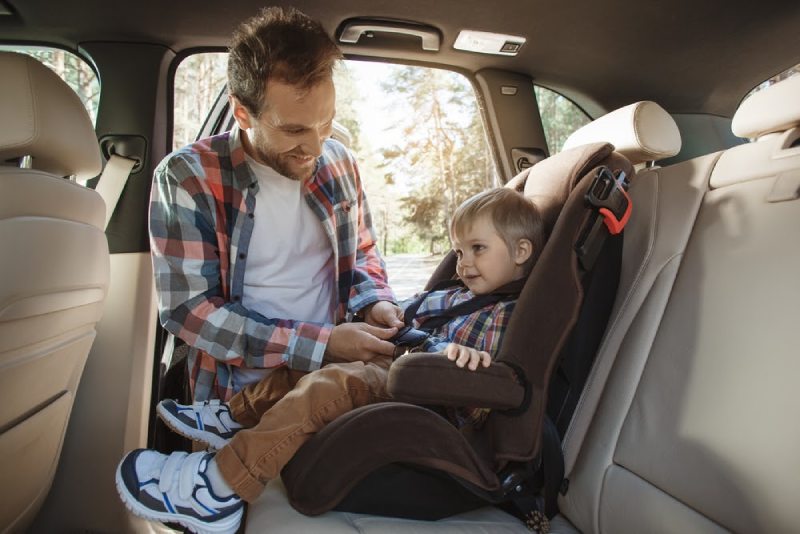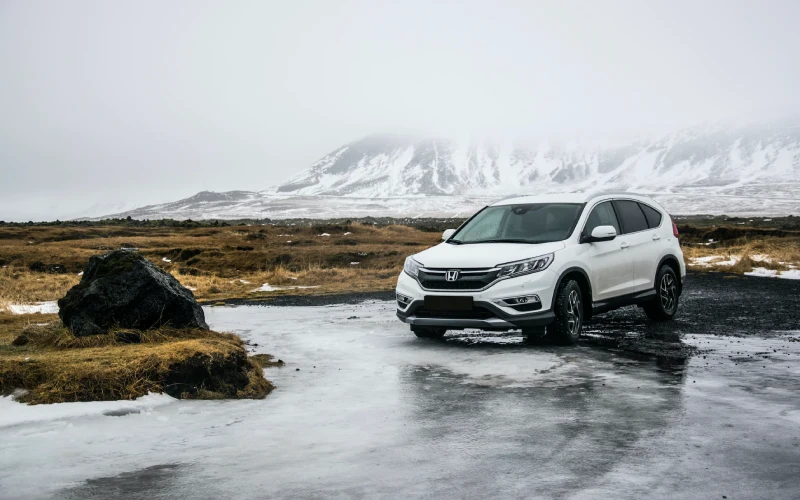What To Look For When Choosing A Family Car
8 min read
Are you in the market for a brand-new family car? Is your old people mover worn out, tired, and ready for retirement? If that’s the case, then this article is for you.
Buying a new family car is a massive undertaking, and you want to be sure that you make a wise, informed, and considerate choice. A car is a major asset, and you should never rush into purchasing any major asset. There are a few things to look for when shopping for a family car, so follow these tips before you shake the salesperson’s hand.
When choosing a family car, there are several factors you should consider to ensure the safe operation of your vehicle:
- Crash test ratings: Look for a car that has a good rating from the National Highway Traffic Safety Administration (NHTSA) or the Insurance Institute for Highway Safety (IIHS). These organizations test vehicles for crashworthiness and provide ratings based on their performance.
- Vehicle size: Larger vehicles, such as SUVs and minivans, tend to offer more protection in the event of a crash. However, smaller cars can also be safe if they have good crash test ratings and advanced safety features.
- Safety features: Look for a car that has advanced safety features such as airbags, stability control, and rearview cameras. These features can help prevent accidents and protect you and your family in the event of a crash.
- Reliability: Choose a car that has a good reputation for reliability. This will help ensure that the car is less likely to break down or experience problems while you are driving.
By considering these factors, you can help ensure the safe operation of your vehicle and protect your family on the road.
When choosing a family car, there are several factors to consider. Some things to consider include:

- Space: A family car should have plenty of room for both passengers and cargo. Look for a car with a spacious interior, as well as a large trunk or cargo area.
- Safety: Safety is especially important when it comes to transporting children. Look for a car with a good safety rating, as well as features like airbags and stability control.
- Fuel efficiency: A family car should be fuel efficient, especially if you will be doing a lot of driving. Look for a car with good gas mileage to save money on fuel costs.
- Reliability: A family car should be reliable and able to withstand the wear and tear of daily use. Look for a car with a good reputation for reliability and a long warranty.
- Comfort: A family car should be comfortable for both the driver and passengers. Look for a car with comfortable seats and a smooth ride.
- Features: Consider the features that are important to you and your family. Some features to consider may include a rearview camera, a navigation system, and Bluetooth connectivity.
- Price: Determine your budget and look for a car that fits within it. Remember to factor in the cost of maintenance and repairs, as well as fuel costs.
It may also be helpful to test drive a few different cars to see which one feels the best fit for your family.
Table of Contents
Can it Move Your People?

People have a variety of preferences when it comes to choosing a car. Some may prioritize fuel efficiency and look for a car with good gas mileage. Others may prioritize safety and look for a car with a good safety rating and advanced safety features. Still, others may prioritize comfort and look for a car with comfortable seats and a smooth ride.
Other factors that people may consider when choosing a car include the car’s reputation for reliability, the availability of features like a navigation system or Bluetooth connectivity, and the overall price of the car, including the cost of maintenance and repairs. Some people may also consider the style or appearance of the car, or whether it meets certain environmental standards.
Ultimately, the specific preferences of an individual or family when choosing a car will depend on their unique needs and priorities.
Most family cars come with more seats than a regular sedans. You’ll find there are six, seven, or even eight more seat options when it comes to these larger automobiles. You need to have a firm idea of how many seats you’ll need. To start, think about the size of your immediate family – you, your partner, and the kids. Then consider how frequently you also need to transport other people, for instance, your kids’ friends or elderly family members. You should by now have a sense of how many seats you’ll need, so look for a model that meets that need.
How Reliable is It?

Family cars don’t have to be sexy, flash, have massive torque, or cost a million dollars. One thing that is a non-negotiable, however, is that a family car needs to be reliable and dependable. The last thing you want is a vehicle that spends more time at the mechanics than it does getting you and yours around town. Do some research on reliable and dependable car brands – this way, you’ll know which makes to avoid and which makes you can depend on.
There are several car brands that are known for their reliability and dependability.
Some highly rated brands include:
- Toyota: Toyota is known for producing reliable cars that hold their value over time. Many Toyota models, such as the Camry and Corolla, are popular choices for families.
- Honda: Honda is another brand that is known for producing reliable cars. Models like the Civic and Accord are popular choices for families.
- Subaru: Subaru is known for producing reliable cars that perform well in harsh weather conditions. The Outback and Forester are popular choices for families.
- Hyundai: Hyundai has a reputation for producing reliable cars at a lower price point. Models like the Sonata and Santa Fe are popular choices for families.
- Mazda: Mazda is known for producing reliable cars that offer a balance of performance and fuel efficiency. The Mazda3 and Mazda CX-5 are popular choices for families.
It’s worth noting that reliability can vary from model to model within a brand, so it’s a good idea to do your research and read reviews before making a decision.
Fuel Economy – Save Money at the Pump

Sometimes larger vehicles can be quite thirsty, which means that they guzzle fuel, costing you more money over time as you have to fill the tank more often. However, modern family cars are becoming more and more fuel-efficient, consuming less fuel to get you to where you need to go. So, read up on the manufacturer’s fuel economy ratings, but don’t stop there. Ask friends and family who have family cars how their vehicle goes with fuel economy.
Also, it’s worth reading up on anecdotal stories of fuel consumption on internet forums and Facebook groups, as sometimes in different road conditions a vehicle’s fuel consumption can vary from what the manufacturer reports.
Improving your vehicle’s fuel economy can help you save money at the pump and reduce your carbon footprint.
Here are a few tips to help you get better fuel economy:
- Keep your tires properly inflated. Underinflated tires can decrease fuel efficiency by up to 3%.
- Use the recommended grade of oil for your vehicle. Using a lower-viscosity oil can improve fuel economy.
- Avoid excessive idling. Shutting off your engine while waiting in traffic or at a drive-thru can save fuel.
- Use cruise control on the highway. Maintaining a steady speed can improve fuel efficiency.
- Avoid rapid acceleration and braking. Smooth, gradual acceleration and braking can save fuel.
- Remove excess weight from your vehicle. Every 100 pounds of extra weight can reduce fuel efficiency by up to 2%.
- Use the manufacturer’s recommended grade of fuel. Using a lower grade of fuel can decrease fuel efficiency.
- Avoid using your air conditioning if possible. Using your air conditioning can decrease fuel efficiency by up to 20%.
By following these tips, you can help improve your vehicle’s fuel economy and save money on fuel costs.
Safety and Security

Finally, any family car you consider needs to be safe to drive and safe for your passengers. After all, your most precious cargo is on board. Look for vehicles that have high safety ratings and that come packed with a range of safety features. Most modern cars on the market these days have automatic braking systems, lane drift detection, reversing cameras, and other high-tech safety features. You want to feel safe behind the wheel, knowing that in the unlikely event of an accident you and your family should emerge unscathed.
Security features are also worth thinking about, as unfortunately there are some nefarious characters out there. Look for features like an immobilizer and other anti-theft measures.
Safety is an important factor to consider when choosing a family car. Here are a few tips to help you find a safe vehicle:
- Check the vehicle’s safety ratings. The National Highway Traffic Safety Administration (NHTSA) and the Insurance Institute for Highway Safety (IIHS) both provide ratings for vehicles based on crash test results. Look for vehicles that have high ratings from both organizations.
- Look for safety features. Modern vehicles often come equipped with advanced safety features like airbags, stability control, and traction control. These features can help protect you and your passengers in the event of a collision.
- Consider size and weight. Larger, heavier vehicles generally offer more protection in a crash than smaller, lighter ones.
- Test drive the vehicle. Take the vehicle for a test drive to see how it handles and feels on the road.
By considering these factors, you can help ensure that the family car you choose is safe for you and your passengers.
In Conclusion

When shopping for a family car, consider the above tips. Assess if the automobiles you’re considering can move all your people, and always choose a reliable and dependable make and model. Research fuel economy, as no one likes to refill the tank every few days. And finally, pick a family car that is safe and secure for you and your loved ones.
In addition to the points, it’s also a good idea to think about the vehicle’s cargo space and storage options. A family car should have enough room to accommodate all of your passengers and their belongings, whether you’re going on a long road trip or just running errands around town.
Another important factor to consider is the vehicle’s maintenance and repair costs. Look for a car that has a good track record for reliability and has reasonable maintenance and repair costs. This will help you save money in the long run and reduce the risk of unexpected expenses.
Finally, consider the vehicle’s resale value. If you plan on keeping the car for a long time, this may not be as important, but if you think you may sell or trade in the car in the future, it’s a good idea to choose a model with a good resale value. This will help you get a better price when it’s time to sell or trade in the car.





